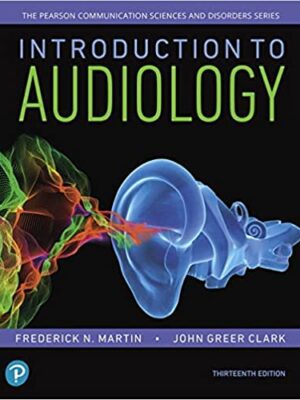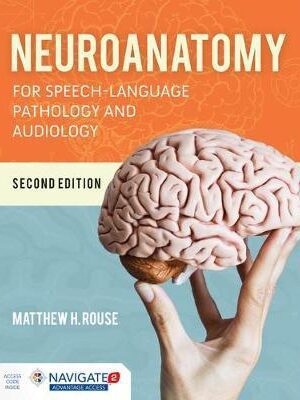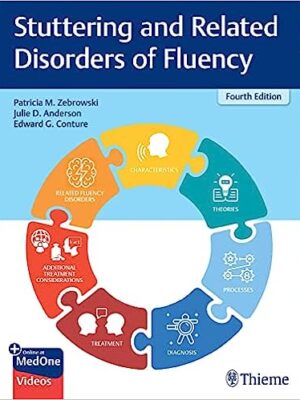Stuttering and Related Disorders of Fluency 4th Edition
Stuttering and Related Disorders of Fluency Fourth Edition:
A student-friendly resource on stuttering and related fluency disorders by a who’s who of global experts
Stuttering and Related Disorders of Fluency, Fourth Edition honors the philosophy that discoveries of the past are the bedrock of the present and the inspiration for future explorations—in this context—the nature and treatment of stuttering. Initially developed over 30 years ago, the first two editions were edited by the late Richard F. Curlee and the third edition was co-edited by Richard F. Curlee and Edward G. Conture. The latest edition, co-edited by Patricia M. Zebrowski, Julie D. Anderson, and Edward G. Conture, brings together contemporary insights and a multinational perspective from 44 world-class academicians, clinicians, and researchers in the field of stuttering and related disorders.
The book is organized into six sections and 17 chapters, with the first section describing basic facts and theories. The second section covers genetic, neural, linguistic, cognitive, and physiological factors. The third section features three dedicated chapters on the diagnosis of preschool-age children, school-age children, and adolescents and adults. The fourth section discusses treatment guidelines with three chapters organized by the same age demographics, while the fifth section covers language and phonological, bilingual and multicultural, and pharmacological considerations for treatment. The sixth, and last, section provides guidance on cluttering and acquired stuttering—from causes and symptoms to diagnosis and treatment.
Key Highlights
- Up-to-date, reader-friendly text is ideal for students with no or limited background or experience in the nature and treatment of stuttering and related fluency disorders
- Comprehensive content covering all relevant aspects of stuttering in diverse populations across the lifespan, including etiology, development, diagnosis, and treatment
- Contributions from a diverse group of top scholars and practitioners from the United States, Canada, Western Europe, and Australia
This text is essential reading for upper-class undergraduates and early-stage graduate students in communication sciences and disorders. It also provides an invaluable classroom tool for instructors teaching basic courses on this subject and is a helpful sourcebook for researchers investigating stuttering and related fluency disorders.
Additional ISBNs:
∗ eText ISBN: 1638537070, 978-1638537076, 9781638537076
- See additional information on the Amazon.
More Details
Stuttering and Related Disorders of Fluency 4th Edition:
Stuttering and Related Disorders of Fluency
MedOne Access Information
Ttle Page
Copyright
Dedication
Contents
Videos
Foreword
Preface
Contributors
Section I: Some Characteristics and Theories
1 Common Characteristics
2 Some 20th- and 21st-Century Theories of Stuttering: A Brief Overview
Section II: Processes Assocated wth Stuttenng
3 Genetic Processes
4 Speech, Language, and Cogntwe Processes
5 Neural and Physiological Processes
6 Temperamental and Emotional Processes
Section III: Dagnoss of Stuttenng
7 Preschool-Age Children
8 School-Age Children
9 Adolescents and Adults
Section IV: Treatment of Stuttenng
10 Preschool-Age Children
11 School-Age Children
12 Adolescents and Adults
Section V: Additional Treatment Considerations
13 Language and Phonological Considerations
14 Bilingual and Muticutural Considerations
15 Pharmacological Considerations for the Treatment of Stuttemg
Section VI: Related Fluency Dsorders
16 Cluttemg: Etiology, Symptomatology, Identification, and Treatment
17 Acquired Stuttering: Etiology, Symptomatology, Identification, and Treatment
Index
Additional MedOne Access Information



















 Dentistry
Dentistry
Reviews
There are no reviews yet.